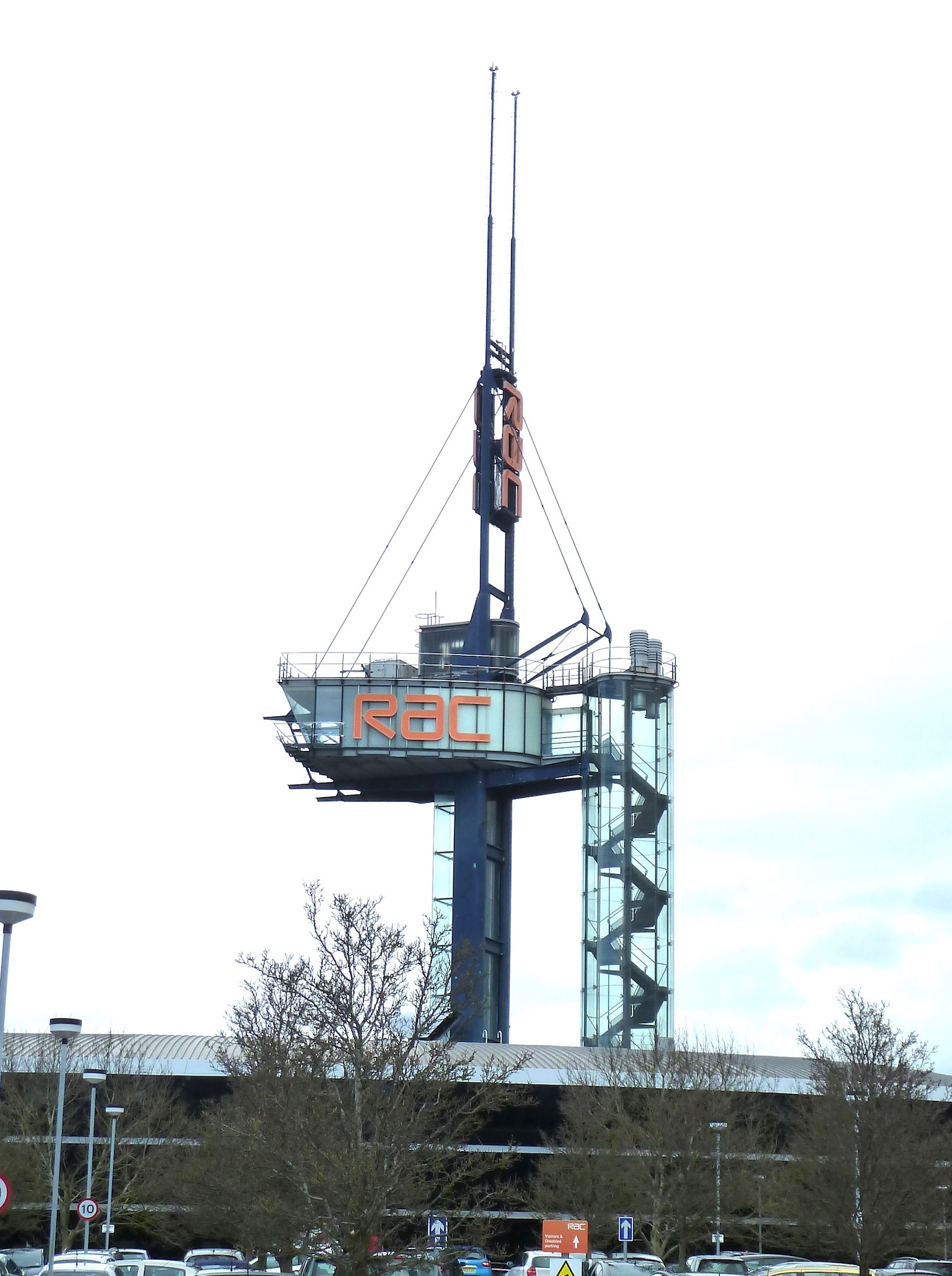
Kim Henson reports on the RAC’s fascinating regional base near Bristol…
I have frequently driven along the south-west sections of M4 and M5, passing and always admiring the fascinating, futuristic-looking RAC building at Bradley Stoke, just south of the M4/M5 junction near Bristol. I’ve also often wondered what goes on inside the centre.
Recently I was invited to tour the building to find out more about it, also to learn about the RAC’s various operations to help motorists today, and how the organisation’s approach has changed in the last few years.
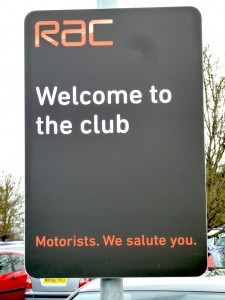
In fact the building is home to the RAC’s regional centre for the south-west of Britain, and is one of the organisation’s three major bases, all found at strategic locations around the country, and all close to motorways. These are at Bradley Stoke, Bescot (Walsall) and Stretford (Manchester).
Worth mentioning too, and a happy reminder of the organisation’s heritage, is the historic, long-standing RAC Club in Pall Mall (also home to the RAC Foundation), although the RAC today is not connected directly to the Club.
The Bradley Stoke facility is not, as many imagine, home to the call centre for motorists in need of assistance with their vehicles (this honour goes to the RAC’s Bescot operations centre, positioned adjacent to the M6 motorway near Walsall). By contrast the Bradley Stoke base caters for the training and development of RAC employees, also ‘Sales and Service’ (in terms of call centres dealing with RAC membership, joining, renewals, financial aspects, etc.), plus legal practice, insurance products, customer service, and so on.
In addition the building accommodates marketing operations (including outbound calls), European breakdown business, corporate membership, travel administration for members, etc.
Completed in 1994, the fascinating structure was designed by Nicholas Grimshaw, the same firm that was responsible for the design of the Eden Project and the Eurostar Terminal.
It stands at a height of 60 metres (approximately 200 feet) to the tops of its masts, and the red lamps at its tallest point are used as references by the RAF!
The building, which appears to be oval or circular in profile, but in fact is triangular, was built to withstand winds of 100 mph, and as part of this is designed to sway – quite a bit – which can be daunting to the uninitiated!
The design deliberately incorporates a nautical theme, including, for example, ‘porthole’ windows in doors, a ‘crow’s nest’ (in the form of the ‘Central Viewing Room (‘CVR’), masts, gangways and so on.
The building incorporates 718 panes of glass, 30 mm (1 3/16 in) thick and each weighing ¼ tonne (about 550 lb), and each costing £2,500 (so adding up to £1,795,000 in total). It also relies on 290,000 metres (180 miles) of cable (long enough to stretch from Bristol to Liverpool!).
The Central Viewing Room is positioned 30 metres (nearly 100 feet) above ground level, and is an ideal venue for training, meetings, conferences, etc. On clear days it offers spectacular views across South Gloucestershire, Somerset, Bristol and South Wales (including both Severn road bridges), as well as the M4/M5 junction, to which it is adjacent.
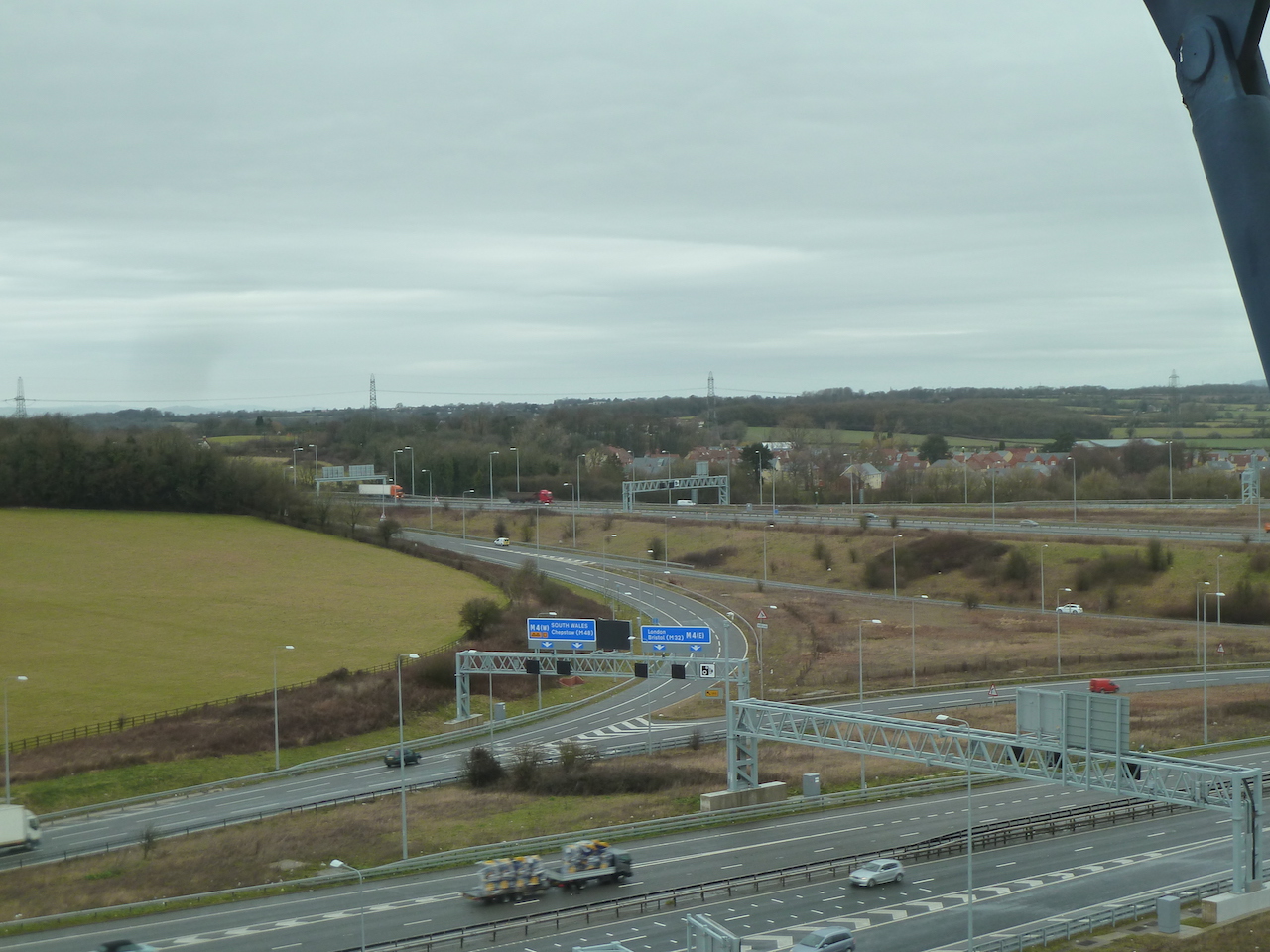
I was shown around the building, starting at the ground floor, which includes a large atrium and staff café; there’s also a garden, complete with a pond (housing Koi carp!), fed by rainwater from the building’s roof.
Moving up to the first floor (using the building’s ingenious internal staircases), I was next shown the Newsroom, where the Press Office prepares press releases each afternoon, and the ‘Sales and Service’ control room, where the customer-focussed activities previously mentioned take place.
The second floor is home to the ‘Senior Leadership Team’, resource planners, business development/support, recruitment and development operations, legal practice and other activities.
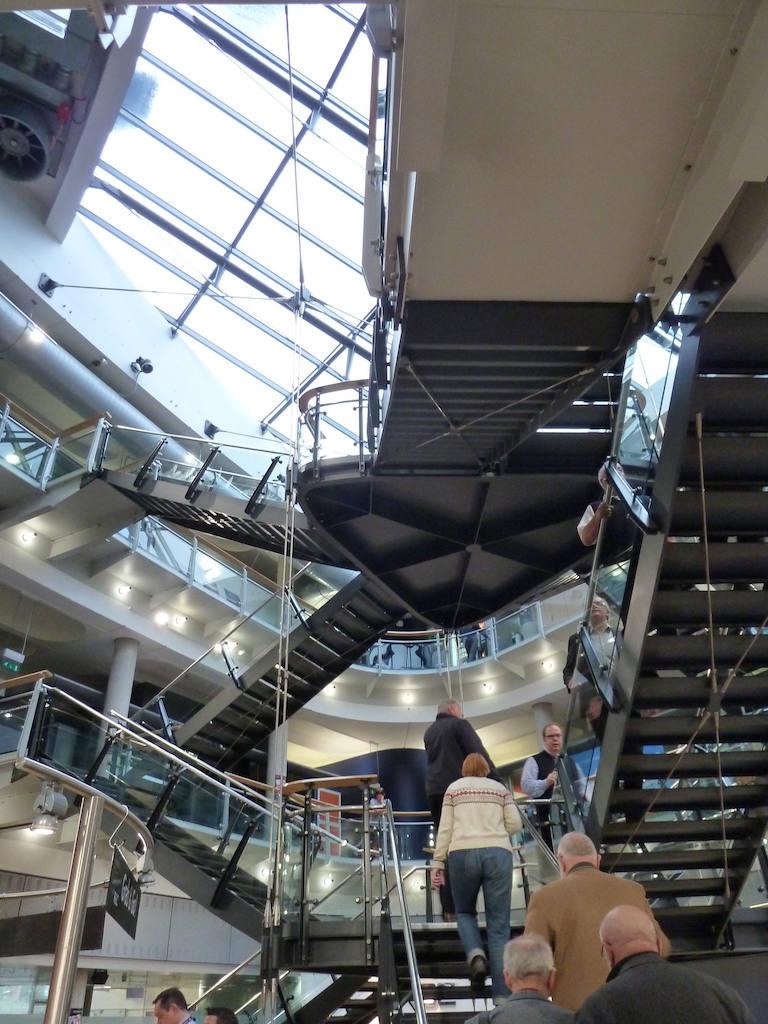
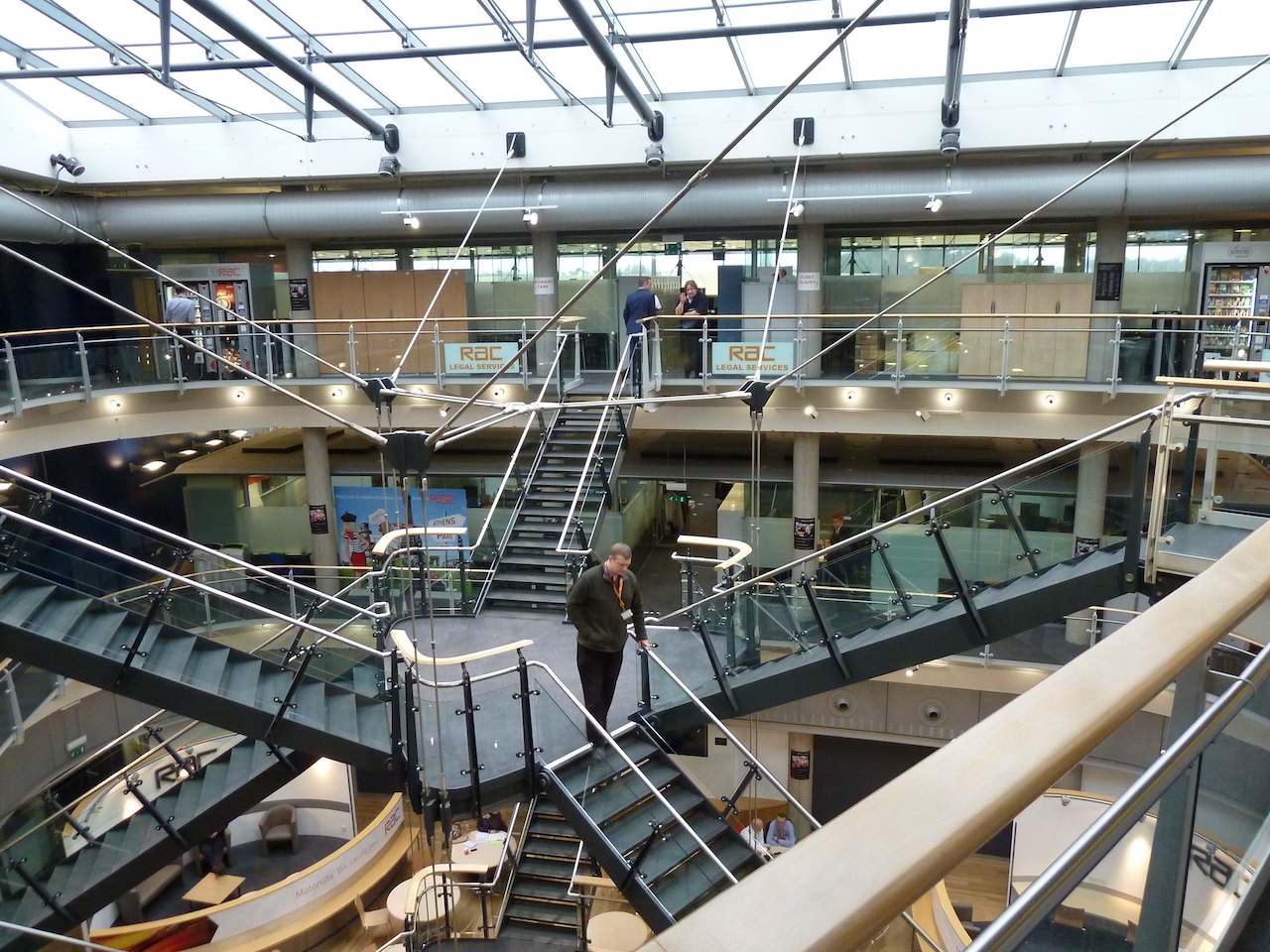
In total, when it is fully occupied, around 800 RAC employees work at the Bradley Stoke centre.
HELPING TODAY’S MOTORISTS
On arrival at the Bradley Stoke base, I was highly impressed by the sign at the entrance to the car park, which reads, “RAC – Welcome to the club. Motorists. We salute you.”…
In an age when life for drivers is often (deliberately?) made difficult by the ‘powers that be’ in terms of government and regional authorities (etc.), this sign represents a refreshing approach, and greatly cheered me up at the start of my visit!
Of course, one of the RAC’s main reasons for existence is, and always has been, assisting motorists, especially those experiencing trouble with their vehicles.
The last part of the Bradley Stoke building I visited was the Central Viewing Room, with its amazing panoramic views. While in this room, David Bizley, the RAC’s Chief Engineer, explained that over the last 15 years or so, the organisation’s method of operations in respect of breakdown assistance has changed in a number of ways.
For a start, until a few years ago the RAC often used outside agencies to handle calls from stranded motorists, but these days the service is provided by ‘in house’ RAC patrol vans and the organisation’s own employees. This is because it was found that the RAC’s own patrols are more effective than contractors at diagnosing faults and fixing them.
In addition, the single biggest recent development in terms of how the RAC helps motorists with ailing vehicles has been the adoption of ‘Rapid Deployable Trailers’, which were developed specifically for the RAC for the organisation’s patrols. These relatively compact trailer assemblies are designed to fit into the back of a patrol van when not in use, and when required, are towed behind it with the front wheels of the faulty vehicle riding on the purpose-designed ramps/clamps. David explained that if the vehicle cannot be fixed at the roadside, in most cases (up to 80 per cent) it can be recovered from the breakdown scene on one of these trailers.
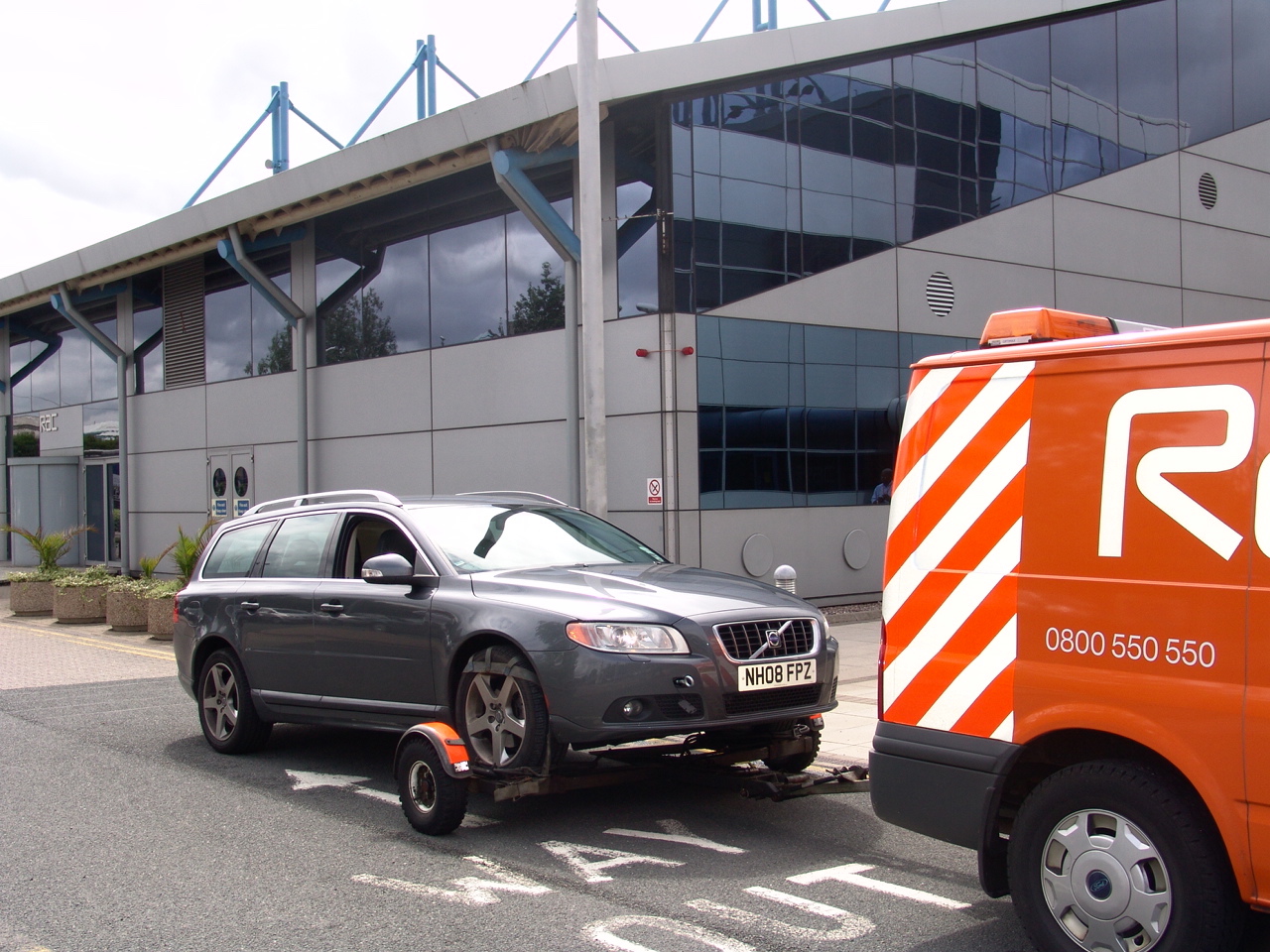
Looking back at the scenario as it was in 2000/2001… If it was decided that a car could not be fixed at the roadside, the customer would have to wait for recovery by a specialist vehicle. Nowadays the Rapid Deployable Trailers are despatched to jobs in which there is considered to be a 50/50 chance of repair versus recovery, so it’s there if needed. Patrols can now be sent to between 10 and 12 per cent more incidents than previously.
The aim, always, is to ‘repair’, rather than ‘recover’ a vehicle, and of course diagnosing the precise cause of the breakdown is critically important in this. Back in 2000 ‘On Board Diagnostics’ was in its infancy, and fault code data was (generally) not very precise.
These days the data typically available via the vehicle’s EOBD set-up helps to pinpoint more precisely the nature of the problem. This aspect is also helped by the use of sophisticated diagnostic equipment (since the start of 2014, available due to the RAC’s partnership with Würth), covering a very wide range of makes and models.
A few figures, relating to vehicles up to five years old, help to illustrate the overall improvement in the RAC’s ability to assist motorists in breakdown situations. In the last 15 years, although the average time required to complete a repair has increased from around 23 minutes to just over 36 minutes, the patrol roadside repair rate has improved from 81.4 per cent to 89.6 per cent, and the overall roadside repair rate (which includes previous work by outside contractors) has risen from 69.7 to 87.1 per cent.
From the end of the year 2000, under new legislation it became a requirement for all vehicles to be equipped with standard-fit diagnostic sockets (to enable diagnostic interrogation to retrieve stored fault codes under a variety of categories).
Until that time, proprietary diagnostics involved the use of special equipment, specific to each vehicle, to discover faults stored under broader (less precise) main headings.
David further advised that about seven/eight years ago it was realised that repair trend data revealed that the balance between repairing and recovering members’ vehicles was wrong, and the RAC started then to reward patrols that were able to effect a permanent repair (where possible) at the roadside.
Fixing a car at the roadside, rather than transporting it to a workshop (which was expensive and environmentally unfriendly) then became the aim.
David gave some interesting statistics, comparing faults encountered by RAC patrols in 2001, versus 2014…
Notably, mechanical ailments have reduced from 7.7 per cent of the total (in 2001) to 3.7 per cent today, due to improved manufacturer engineering, as well as fewer examples of incorrectly diagnosing fault codes, by outside contractors.
By contrast, exhaust system problems have increased from 0.8 per cent to 2.3 per cent of the total, largely due to the introduction of exhaust gas recirculation systems and diesel particulate filters – although the RAC’s latest equipment enables ‘regeneration’ of such systems at the roadside (at least in most cases).
Fuel contamination has also become more prevalent – up from 1.3 to 3.0 per cent of the total (with a higher volume of diesel models now on the roads than 15 years ago, resulting in a greater risk of petrol being introduced to the diesel tank… and not helped by the fact that a petrol filler nozzle will fit inside a diesel car tank’s filler neck, but not the other way round).
Troubles with keys, locks, alarms and immobilisers have reduced, partly due to more reliable ‘original equipment fitting’ on many models.
TYRESOME
Over the last 15 years, wheel and tyre problems have increased from 14.2 per cent to a whopping 33.2 per cent of the total faults dealt with by the RAC, due to the vast numbers of dodgy, disgraceful and dangerous potholes on Britain’s roads, and to the ongoing discontinuation of standard-fit spare wheels by many motor manufacturers. Sadly for motorists, this trend is not going to be reversed, as doing away with a standard-fit spare helps to reduce vehicle weight and thus improve mpg and emissions performance, as measured with a ‘standard’ vehicle.
A puncture/damaged wheel can be very challenging to sort out at the roadside, mainly because of the difficulty of obtaining the correct wheel/tyre when needed (especially in country districts, at night, etc.).
To help overcome such problems, the RAC has developed a ‘universal’ spare wheel. At the moment the organisation has available a five stud type, which fits about 75 per cent of vehicles on our roads, and is currently working on a new four stud wheel.
These ingenious new wheels (shod with 50 mph limited, ‘get you home’ type temporary tyres) each incorporate a series of inserts, enabling the pitch of the wheel to be varied according to the design of the vehicle.
For convenience the customer can take the car to a tyre dealer to have the correct wheel/tyre configuration restored, leaving the RAC’s ‘special’ wheel/tyre there to be returned to the RAC for helping another member.
David added that the RAC are providing increasing numbers of specialist tyre patrols (especially in city centre areas, where there is usually a good infrastructure in place for the supply of tyres).
However, all the RAC patrol vans carry a universal spare wheel/tyre.
THANKS
Grateful thanks to all the team at the RAC at Bradley Stoke, for facilitating my visit.
FACTS AND FIGURES
- Each year the RAC handles approximately 2.1 million callouts, with around one million of these relating to vehicles under five years old.
- The RAC operates approximately 1,500 conventional patrols, plus more than 30 specialist fuel patrols (with the ability to be able to drain/purge fuel systems when required), and 10 specialist tyre patrols.
- The organisation operates 50 purpose-designed flatbed recovery vehicles; these operate round the clock in ‘double shifts’.
- The RAC employs a single vehicle (at the moment), usually found in the London area or the West Midlands, but deployable ‘anywhere’, providing a fast-charge capability for electric vehicles. This will enable anyone with an electric car with exhausted batteries to be fast-charged for about 15 minutes, thus restoring enough electrical power to allow the vehicle to be driven for between 10 and 15 miles (so enough to get home, or to a mains charging point).
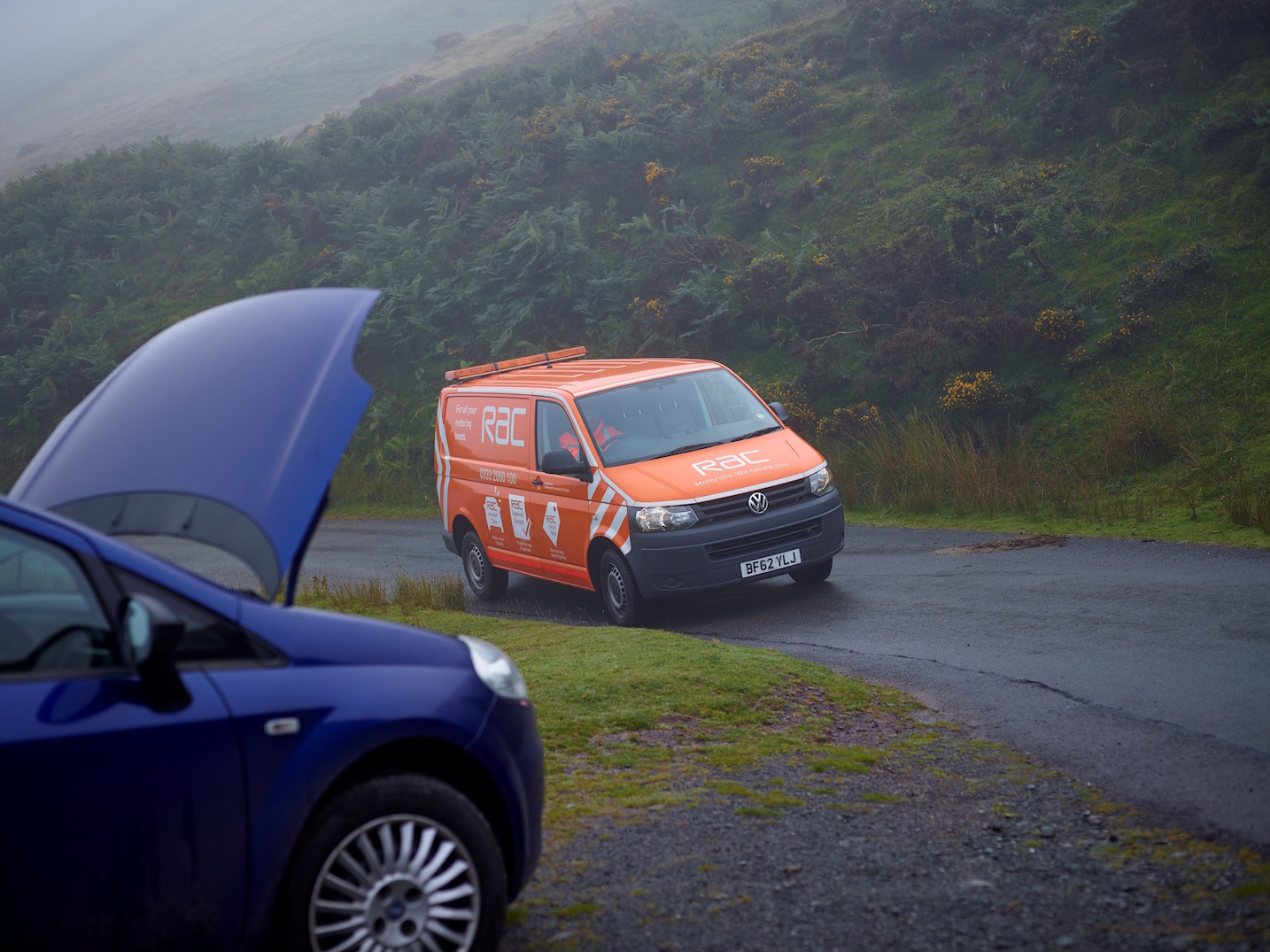
The unmistakable sight of an RAC patrol van can cheer any motorist with an ailing car (especially in remote areas!); the service is available 24 hours a day, all year round.